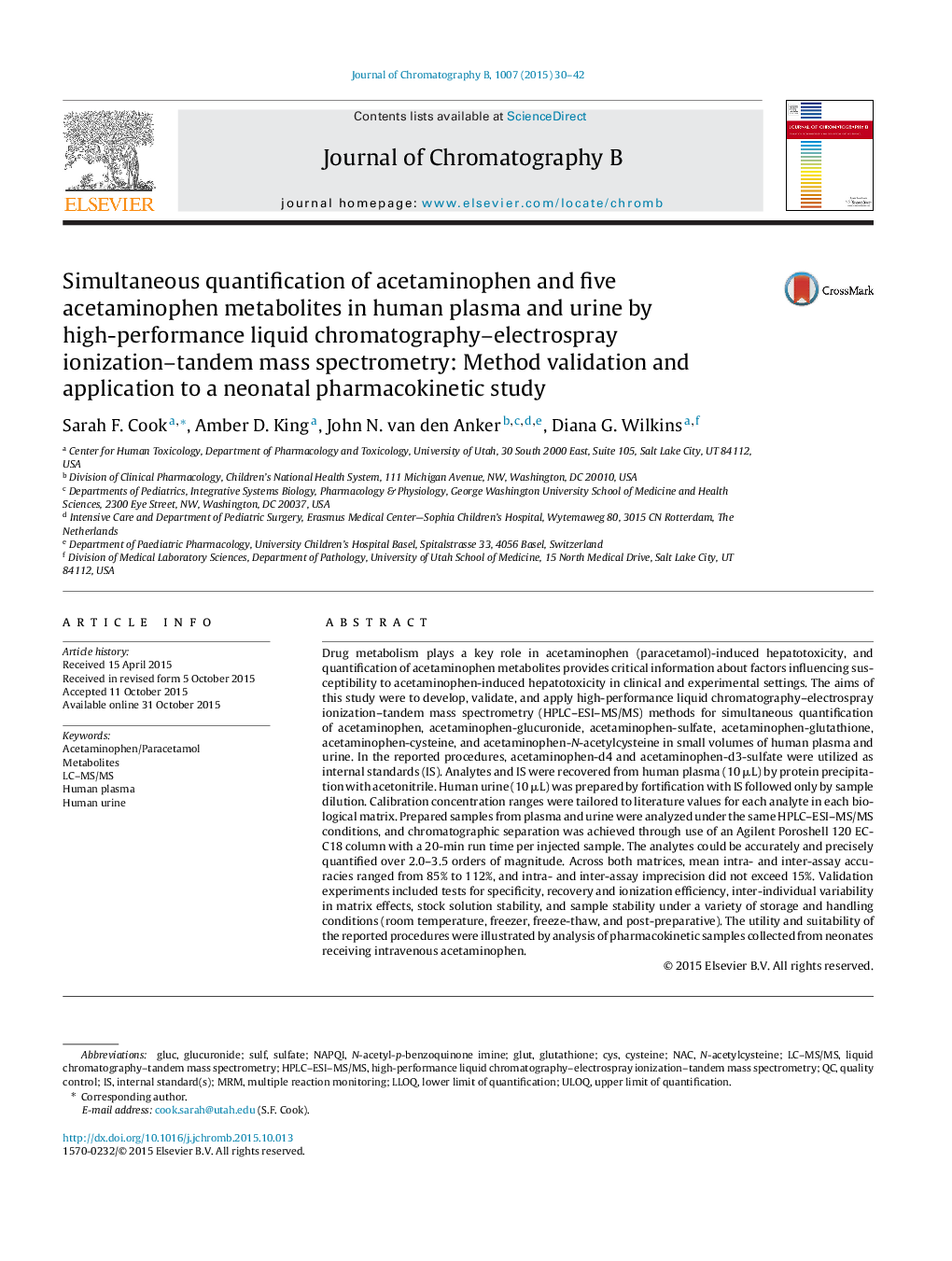| کد مقاله | کد نشریه | سال انتشار | مقاله انگلیسی | نسخه تمام متن |
|---|---|---|---|---|
| 1211997 | 1494044 | 2015 | 13 صفحه PDF | دانلود رایگان |
• A method was developed for analysis of acetaminophen and five of its metabolites.
• The method quantifies all analytes simultaneously by HPLC–ESI–MS/MS.
• The assay was developed and validated for use with human plasma and urine.
• The assays require only 10 μL of plasma or urine.
• The procedures were applied to samples from a neonatal pharmacokinetic study.
Drug metabolism plays a key role in acetaminophen (paracetamol)-induced hepatotoxicity, and quantification of acetaminophen metabolites provides critical information about factors influencing susceptibility to acetaminophen-induced hepatotoxicity in clinical and experimental settings. The aims of this study were to develop, validate, and apply high-performance liquid chromatography–electrospray ionization–tandem mass spectrometry (HPLC–ESI–MS/MS) methods for simultaneous quantification of acetaminophen, acetaminophen-glucuronide, acetaminophen-sulfate, acetaminophen-glutathione, acetaminophen-cysteine, and acetaminophen-N-acetylcysteine in small volumes of human plasma and urine. In the reported procedures, acetaminophen-d4 and acetaminophen-d3-sulfate were utilized as internal standards (IS). Analytes and IS were recovered from human plasma (10 μL) by protein precipitation with acetonitrile. Human urine (10 μL) was prepared by fortification with IS followed only by sample dilution. Calibration concentration ranges were tailored to literature values for each analyte in each biological matrix. Prepared samples from plasma and urine were analyzed under the same HPLC–ESI–MS/MS conditions, and chromatographic separation was achieved through use of an Agilent Poroshell 120 EC-C18 column with a 20-min run time per injected sample. The analytes could be accurately and precisely quantified over 2.0–3.5 orders of magnitude. Across both matrices, mean intra- and inter-assay accuracies ranged from 85% to 112%, and intra- and inter-assay imprecision did not exceed 15%. Validation experiments included tests for specificity, recovery and ionization efficiency, inter-individual variability in matrix effects, stock solution stability, and sample stability under a variety of storage and handling conditions (room temperature, freezer, freeze-thaw, and post-preparative). The utility and suitability of the reported procedures were illustrated by analysis of pharmacokinetic samples collected from neonates receiving intravenous acetaminophen.
Journal: Journal of Chromatography B - Volume 1007, 15 December 2015, Pages 30–42
